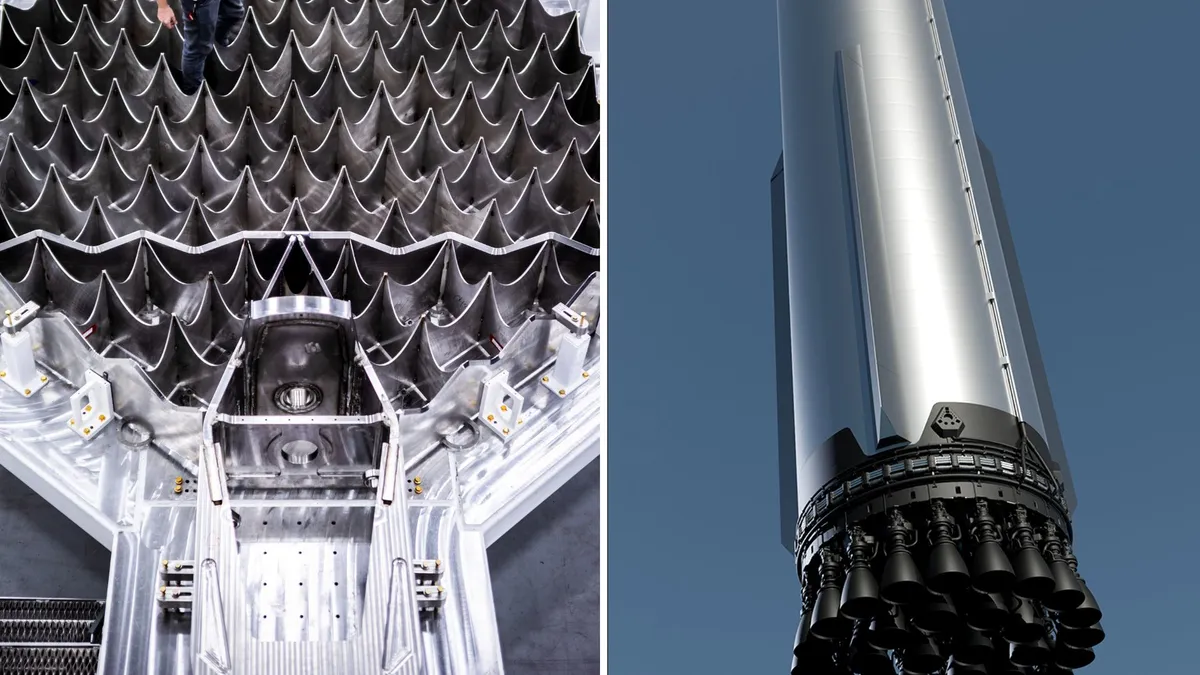
Elon Musk’s SpaceX has announced significant redesigns to its colossal Mars-bound Starship to enhance stability and control during its flight operations. The most prominent change involves the removal of a landing fin from the Super Heavy booster. Instead, SpaceX will implement three redesigned grid fins that are 50% larger and more robust, aimed at improving vehicle control during descent. This announcement was made on Wednesday via a post on X, where the company shared images showcasing the intricate, honeycomb-like structure of the new grid fins. Notably, these fins are among the largest aerodynamic control surfaces ever constructed for a rocket.
SpaceX CEO Musk commented on the redesign, sharing the company’s announcement on X with his trademark brevity: “Best part is no part.” This redesign comes in response to recent test flight failures, underscoring the company’s commitment to refining its technology.
The newly designed grid fins play a crucial role in controlling the rocket's position and trajectory during descent and re-entry. These fins manipulate the airflow around them, and their increased size and strength will enhance the booster’s maneuverability, allowing it to descend at a steeper and more controlled angle during the landing phase. Additionally, the new fins are integrated into the booster’s recovery system, designed to align with the launch tower’s catch arms. This engineering adjustment allows the tower to capture the descending rocket directly, eliminating the requirement for a landing pad.
To further enhance the design, SpaceX has added a new catch point to the booster and positioned the fins lower to ensure proper alignment with the tower’s arms. This strategic placement not only facilitates a more effective catch but also protects the fins from the extreme heat generated by the rocket’s engines. Furthermore, the internal components of the fins, such as the shaft, have been relocated inside the booster’s main fuel tank for added protection during flight.
The journey to Mars has not been without its challenges for SpaceX and its ambitious Starship program. This redesign follows the most recent failed test flight of the fully integrated rocket, which occurred in May. During that test, the Super Heavy booster failed to return to its launchpad and instead crashed into the Gulf of Mexico. Meanwhile, the main ship continued its trajectory over the Indian Ocean before ultimately exploding.
In another incident in June, the rocket’s upper stage exploded on a test stand while undergoing preparations for SpaceX’s tenth Starship flight. As the company gears up for this critical demonstration of the new design, reports indicate that the next launch attempt could happen as early as Saturday, August 16. The launch window is reportedly set between 6:30 am and 8:30 pm local time, although SpaceX typically keeps launch dates under wraps until closer to the event.
These decisions are based on maritime hazard warnings issued by the US, which cover the waterways and sea areas surrounding SpaceX’s Starbase facility in southern Texas. The advisory noted the potential navigation hazards from rocket launching activities, which could include free-falling debris and descending vehicle components.
Earlier this month, Musk hinted in a post on X that SpaceX is targeting a Starship launch in mid-August. The billionaire has set an ambitious goal to send the world’s largest rocket, carrying Tesla’s humanoid robot Optimus, to Mars by the end of 2026. However, given the recent failures and budget cuts from NASA, this timeline may be subject to additional delays.
As SpaceX moves forward with its plans for the Starship program, the recent design improvements and strategic modifications signal a determined pursuit of innovation and success in space exploration.